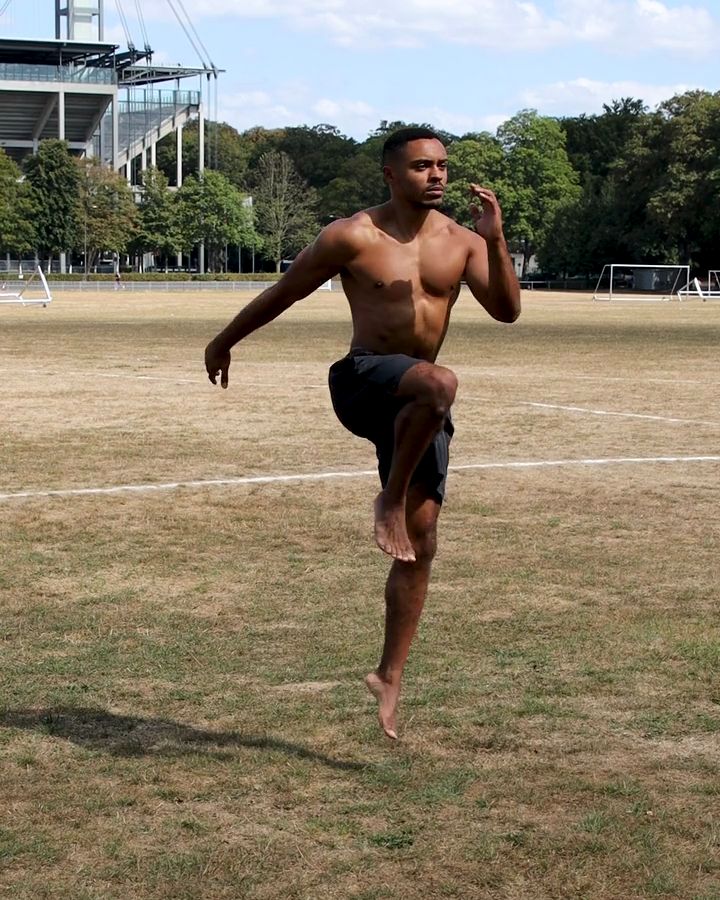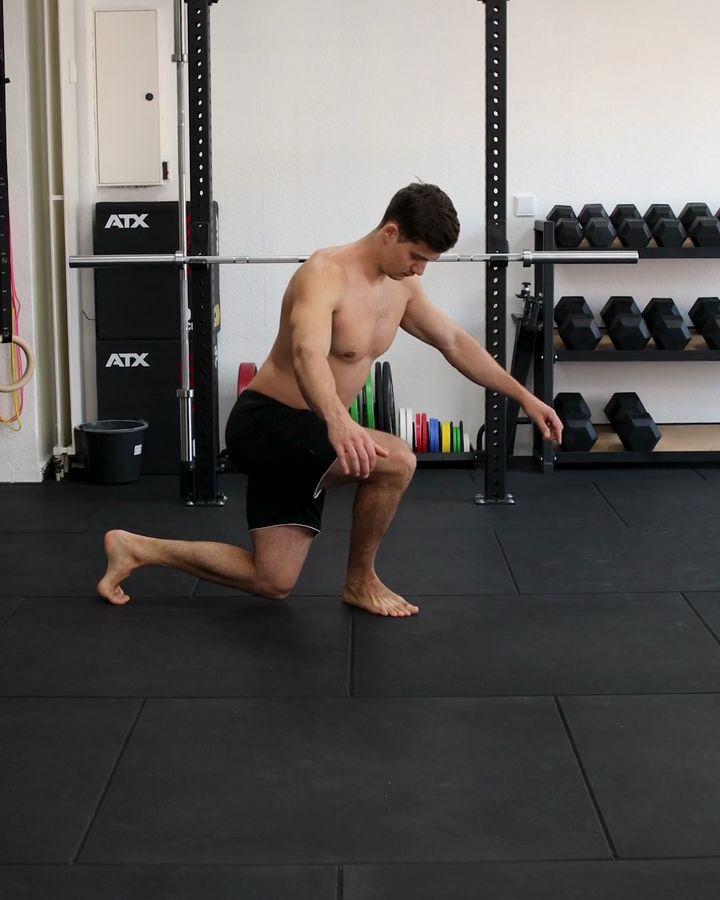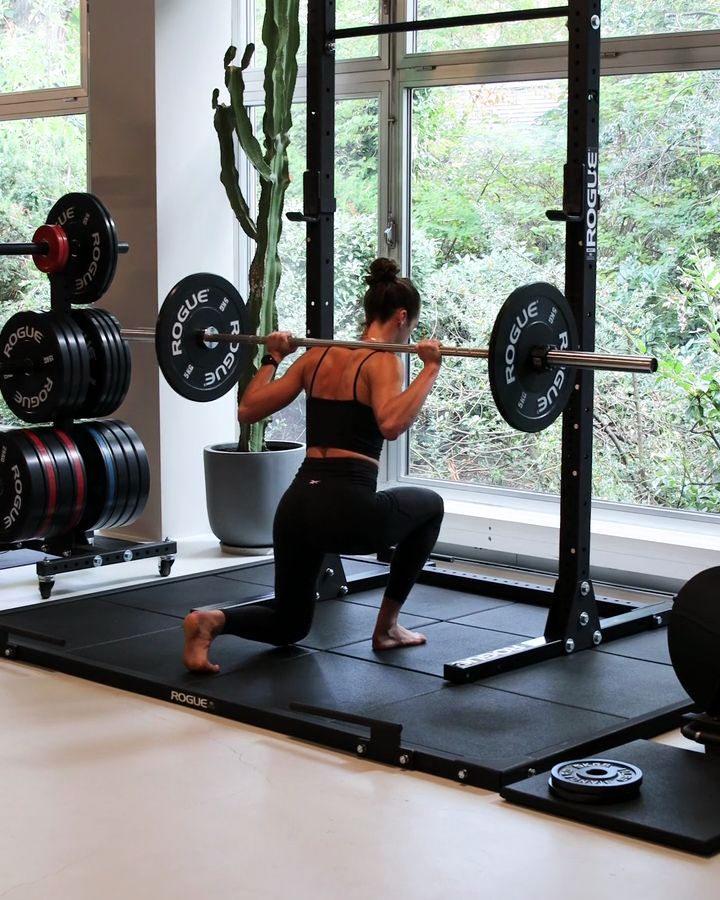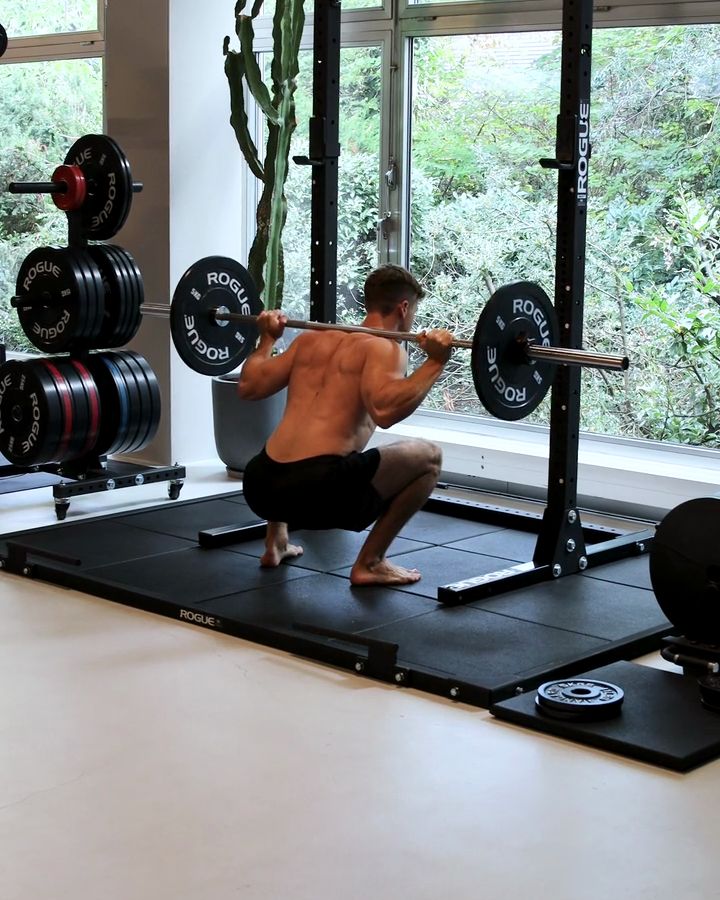Jumping Lunges
Jumping lunges are a dynamic variation of the classic lunge, in which a jump is performed between switching legs. Similar to jump squats, this exercise trains the entire leg and glute muscles while simultaneously promoting coordination and balance. The inclusion of jumps also increases the heart rate and strengthens the cardiovascular system. Jumping lunges are particularly well-suited for HIIT workouts or as an addition to strength training sessions.
Jumping Lunges - the correct execution
- Count each side as a repetition
- Start in the failure step
- Jump explosive upwards
- Change in the air legs
- Land on the front feet
The exercise Jumping Lunges is intended to be used as a hypertrophy exercise.
Which muscles are trained by Jumping Lunges?








Primary trained muscles for Jumping Lunges
Glutes - The gluteus maximus is the large muscle in your buttocks. It is important for extending the hip, moving your leg backward, and stabilizing the hip joint.
Calves - The triceps surae, consisting of the soleus and gastrocnemius muscles, is located on the back of your lower legs. It allows you to stand on your tiptoes and jump powerfully.
Quadriceps - The quadriceps femoris is the large muscle at the front of your thigh. It extends your knee.
Alternative variants of Jumping Lunges:
Jumping Lunges with gym rings
Jumping lunges on the gymnastic rings offer more stability, as you can hold onto the rings while jumping. Compared to regular jumping lunges, the load remains similar, with only the slight assistance of holding and pulling on the rings added.
Necessary equipment
Jumping Lunges with gym rings - the correct execution
- Count each side as a repetition
- Start in lunch position
- Jump explosive upwards
- Change legs in air
- Land on the front feet
- Support yourself as much as necessary with your arms
Explosive Lunges
Explosive lunges, or single-leg jumping lunges, focus on the explosive power development of a single leg by repeatedly loading the same leg with each jump. Unlike jumping lunges, where the legs alternate, this exercise specifically enhances strength and endurance in one leg while training explosive power. It is well-suited for developing jumping ability.
Explosive Lunges - the correct execution
- Start in a step position with the left leg in front
- Bring the right knee to the floor
- The left foot is evenly loaded
- Keep the upper body upright
- Stretch your legs explosively
- Pull the right leg up to the chest
- Jump in the air with your left leg at the same time
- Land in a controlled manner and go into the next lunge
Similar exercises to Jumping Lunges
Curtsey Lunges
Curtsey lunges are a variation of the classic lunge, where the back leg is crossed behind the body. This movement particularly targets the outer thighs and glutes, especially the side glute muscles. The crossing motion also promotes knee joint stability and improves coordination. Compared to the normal lunge, curtsey lunges work the side muscle groups more intensively, making them an effective exercise for balanced leg training.
Lunges
Barbell lunges, also known as barbell lunges, are an effective lower body exercise that provides an ideal way to improve strength and stability. This exercise is suitable for both beginners and advanced practitioners. If you're looking for an exercise that also enhances explosiveness and coordination, jumping lunges are a great alternative.
Barbell Back Squats
Back squats are one of the fundamental exercises in strength training. They are typically performed with a barbell, allowing for progressive overload. Back squats primarily target the thigh muscles, particularly the quadriceps and glutes. Additionally, they strengthen the core and lower back, as these muscles are crucial for stability and control during the exercise.
Back squats are among the most well-known foundational exercises in strength training, as they promote overall body strength and stability, improve functional movements in daily life, and, when combined with other strength exercises like deadlifts or lunges, provide an excellent foundation for leg training.
This could also be interesting
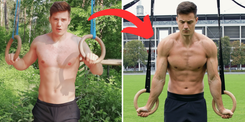
Calisthenics Body Transformation – How to Build a Strong, Lean, and Athletic Physique
Transform your body with Calisthenics! Build muscle, burn fat & achieve a shredded physique with bodyweight training. See real before & after results!

The Best Fitness Apps in 2025: Our Top 10 Recommendations
Don’t miss the best fitness apps of 2025: surprising favorites, free options, and perfect tools for your workouts. Find the ideal app today!
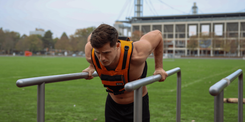
Complete Calisthenics Skills List – 40+ Exercises from Beginner to Pro
Which calisthenics skills should you learn first? And which ones will really help you progress? In this article, you’ll find a complete list of over 40 exercises – from the very basics to the toughest moves for professionals. Each exercise comes with instructions, so you can immediately integrate them into your training.
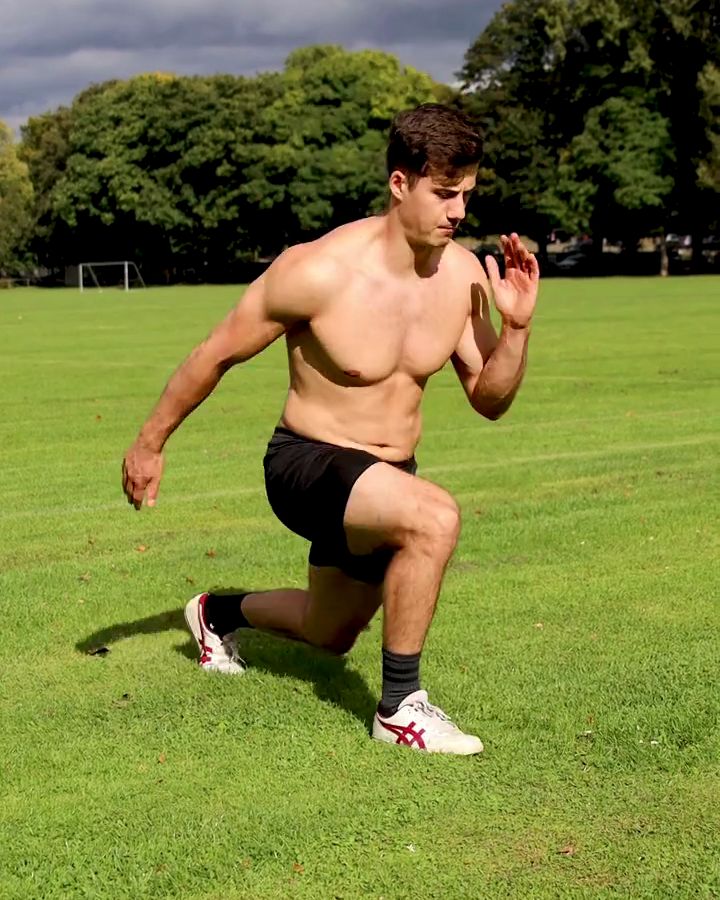


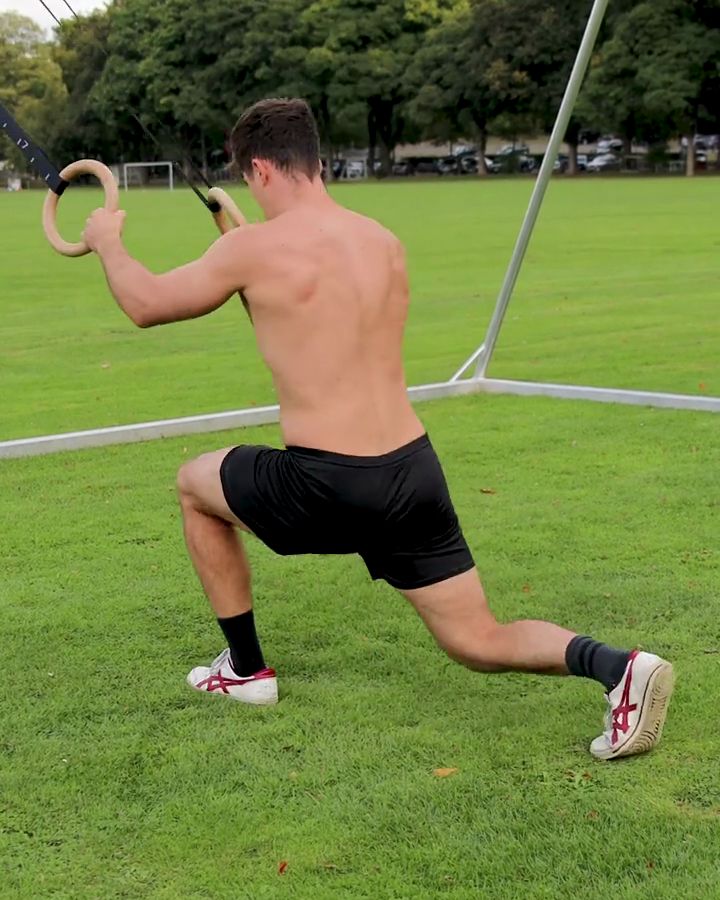
~e5724973d14549c23ea8a586b5736b36.png?alt=media)
